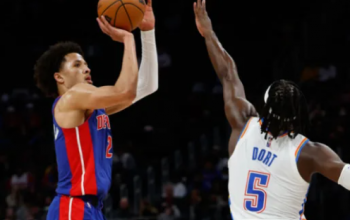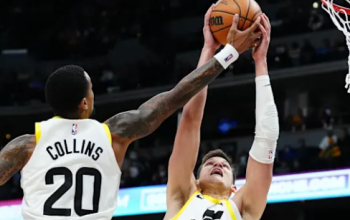How to Read, Understand, and Use Betting Splits to Your Advantage in Finding Value Bets
When it comes to sports betting, everyone is looking for ways to improve their chances of winning. One of the most effective tools for gaining that edge is betting splits. By understanding how to read, interpret, and use betting splits, you can make more informed bets and find value bets that give you an advantage over the sportsbook.
We’ll dive deep into what betting splits are, how they work, how they relate to expected value (EV), and how to incorporate them into your betting strategy. Whether you are an experienced bettor or just starting, learning how to leverage betting splits can be a game-changer.
What Are Betting Splits?
A betting split shows the difference between the number of bets placed on a particular outcome and the total amount of money wagered on that same outcome. In essence, betting splits reveal how public money is distributed across various betting options for a specific game or event.
For example, in a football game, if 70% of bets are placed on Team A to win, but 60% of the money is on Team B, this creates a split. This suggests that while more bettors are backing Team A, the larger, more confident wagers are placed on Team B, likely by sharp bettors.
Understanding these splits is crucial because it allows you to gauge where the sharp money is and potentially find value in betting against the public or following the sharp money.
How Do Betting Splits Work?
Betting splits are typically displayed in two percentages:
- Ticket Percentage (Bet Count): This indicates the percentage of total bets placed on each side. For example, if 70% of bettors are backing Team A, this shows the public sentiment.
- Money Percentage (Betting Volume): This reflects the percentage of total money wagered on each side. If 60% of the money is on Team B, even though fewer bettors are backing Team B, it could indicate that larger or more confident wagers are coming from sharp bettors.
The key insight you gain from betting splits is identifying whether the public (casual bettors) or sharp money (professional bettors) is driving the line movement. By understanding this, you can spot value bets and make better betting decisions.
Why Are Betting Splits Important?
Understanding betting splits can provide multiple insights that help you make smarter, more profitable wagers:
- Gauge Public Sentiment: The betting public often makes wagers based on emotion, their favorite teams, or media hype. This can mess with the betting market and create value for informed bettors. If a popular team has a lot of bets but sharp money is backing the underdog, you might find an opportunity to bet against the public and profit from the mispricing.
- Identify Sharp Money: Sharp money refers to bets placed by professional bettors who tend to have more accurate information or use advanced analytics. Betting splits can help you track where sharp bettors are placing their money. If a team is getting fewer bets but a larger portion of the money, it’s a sign that the sharp money is backing that team.
- Spot Value Bets: A value bet occurs when the odds offered by the sportsbook are mispriced relative to the actual probability of an event. Betting splits can help you identify these opportunities. For example, if the public is heavily betting on one side but the money is coming in on the other side, the line could shift in a way that makes the underdog a solid choice.
How to Read Betting Splits
To effectively use betting splits, here are the key patterns to look out for:
- Ticket Percentage vs. Money Percentage: A major discrepancy between these two can be a clear signal of sharp money. For example, if 70% of the tickets are on Team A, but 60% of the money is on Team B, it suggests that despite the larger number of public bets on Team A, professional bettors are confident in Team B. This could be a strong signal to bet on Team B.
- Reverse Line Movement: Reverse line movement occurs when the betting line moves in favor of the side receiving less public attention, which often indicates that sharp money is behind that side. If most bets are on one team, but the line shifts toward the other team, it is an indicator that bookmakers are adjusting to the sharp money. For example, if the Chiefs are favored at -6 but the line drops to -3.5 despite 70% of the bets being on Kansas City, that’s reverse line movement.
- Early vs. Late Action: The timing of the bets can also offer valuable insights. Early bets often come from more experienced bettors who have a better grasp of the game. Later bets tend to come from the public. If you see sharp money coming in early, following that action can often lead to better odds before the line shifts too much.
How to Use Betting Splits in Your Betting System
Once you understand how to read betting splits, you can incorporate them into a more comprehensive betting strategy. Below are some popular systems based on betting splits:
1. Fading the Public
Fading the public involves betting against the side that the majority of the public is backing. This is particularly useful when the betting splits show a significant difference between ticket percentages and money percentages. If most bets are on a popular team, but sharp money is on the underdog, this creates an opportunity to bet against the public and find value in the underdog.
- Example: If 80% of the bets are on Team A, but 60% of the money is on Team B, the sharp money is likely backing Team B. Betting on Team B could be a profitable contrarian play.
2. Betting on Sharp Money
When a smaller percentage of bets is backing a team, but a large percentage of the money is on that team, it often indicates sharp action. These professional bettors are typically better informed, so following their lead can be a profitable strategy.
- Example: If only 40% of the bets are on Team A, but 70% of the money is backing them, this suggests sharp money is on Team A. In this case, betting on Team A might be a wise choice.
3. Contrarian Betting
Contrarian betting focuses on going against the crowd. If public betting is skewed heavily toward one side, and the line doesn’t move in response, betting on the underdog could offer great value.
- Example: If 90% of the bets are on the favorite, but the line is moving in favor of the underdog, it might be a good opportunity to take the underdog, as the sharp money could be driving the line.
4. Betting Line Movement Patterns
Betting splits can provide an early indication of where the line is likely to move. If you spot a significant discrepancy in betting splits early, placing your bet before the line shifts can help you get better odds.
- Example: If sharp money is on Team A but the public is backing Team B, and you notice the line moving in Team A’s favor, it’s an indication that the line will continue to adjust, and you can capitalize on better odds.
The Role of Expected Value (EV) in Betting Splits
While betting splits provide insight into where the money is going, understanding the expected value (EV) of a bet helps you assess whether a bet is worth taking based on the odds and the probability of an outcome.
The EV of a bet is the difference between your expectations for an event’s outcome and the odds offered by the sportsbook. You can calculate EV by comparing the true odds of an outcome to the betting odds on offer.
Expected Value Formula:
Expected Value = (Probability of Win x Total Payout for Win) + (Probability of Loss x Total Payout for Loss)
EV can be classified as:
- Positive EV: A wager that is projected to be profitable in the long run.
- Negative EV: A wager that is projected to lose money over time.
- Fair/Neutral EV: A wager that is projected to break even in the long run.
Fair vs. Negative vs. Positive EV
Fair Expected Value (Neutral EV)
A bet with neutral EV offers no expected profit or loss over the long term. For example, a fair coin flip with even odds (+100) results in a break-even proposition over time.
Negative Expected Value (Negative EV)
A negative EV bet loses money in the long run. For example, betting $110 to win $100 on a coin flip at -110 odds would result in a loss of $5 per flip over time, as the odds do not fully reflect the true probability.
Positive Expected Value (Positive EV)
A positive EV bet is expected to be profitable over time. For instance, betting $100 to win $110 on heads at +110 odds across 100 coin flips would yield a positive return.
The concept of EV helps bettors assess the fairness of the odds and find value in markets. When betting splits indicate sharp money on an underdog with positive EV, it’s an opportunity to make a profitable wager.
How to apply what you learned on ATSwins
Last night, I noticed something interesting with the Ball State vs Buffalo line. It opened at Ball State +6, and despite 70% of both the tickets and money being on Buffalo, the line moved in Ball State’s favor, dropping to +3.5. Normally, with that much money on the favorite, you’d expect the line to move toward Buffalo, but instead, it moved the other way. This is what’s called reverse line movement, which often indicates that sharp bettors. Even though AI models were picking Buffalo to win, I followed the sharp money and put my bet on Ball State. They ended up covering the spread and I got paid.
Conclusion
Betting splits are a powerful insight that can provide valuable information into the behavior of the public and sharp bettors. By understanding how to read and interpret betting splits, you can identify value bets, spot trends, and make more informed decisions.




